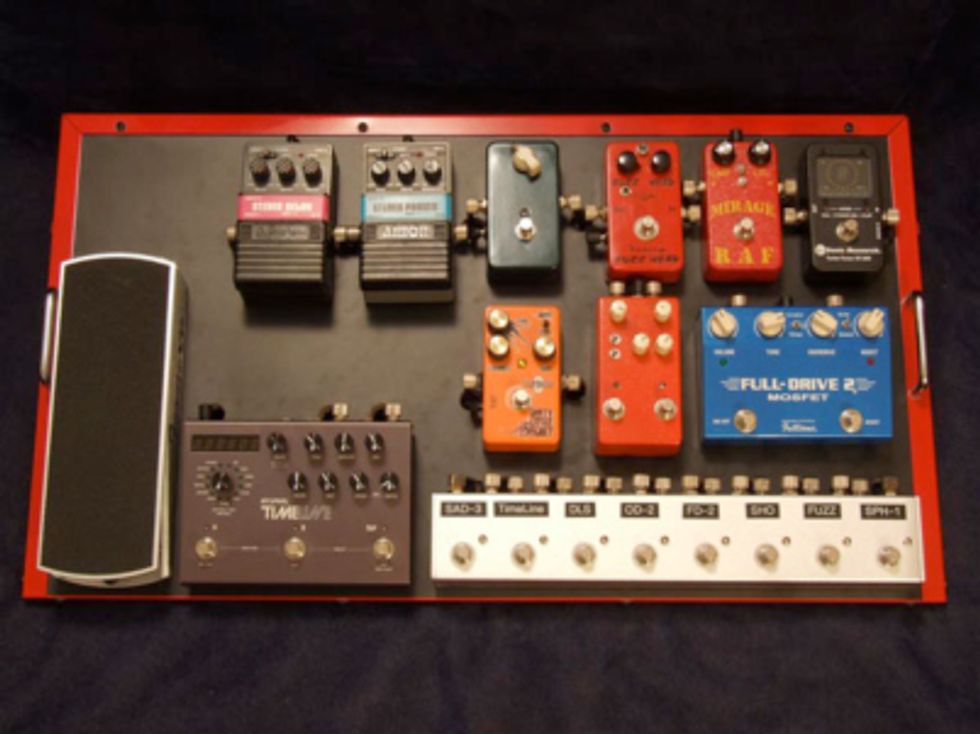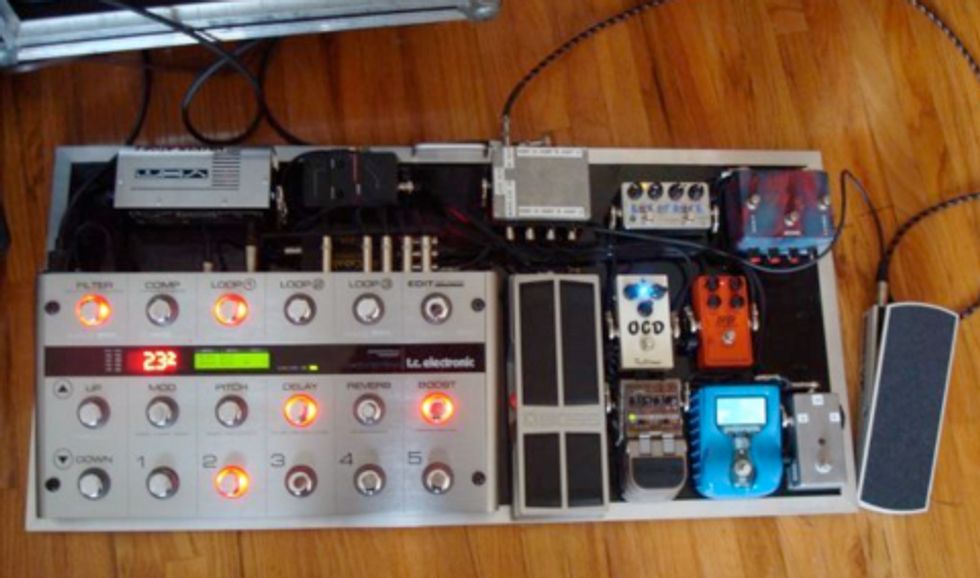Peter Thorn discusses the available options for setting up a killer pedalboard that doesn''t kill your primary tone.
It’s interesting, how we guitarists evolve in not only our playing, but also in our rig setups. Some guys like to plug straight into a great amp, with the least amount of stuff between their fingers and the speakers. And others, such as the Edge from U2, develop a penchant for using elaborate chains of effects, sometimes into multiple amps that can be switched in and out at will.
I fall somewhere in the middle of these extremes. While punk, blues, or jazz players might be able to get away with plugging straight into the amp, most working musicians in the rock, pop, R&B, or country genres need at least some effects—plus, they’re fun! But there’s a price to pay when you add effects to your setup: your core tone can suffer. This month, we’ll look at how to maintain a great base tone while adding pieces to your signal chain.
Of course, pedals won’t help an already mediocre core tone, so it’s important that you are happy with your amp and guitar of choice before delving into the other variables of the equation. Assuming you love your guitar-to-amp tone, let’s get into the particulars.
Incorporating Buffers
We could go on and on about the topic of true bypass vs. buffered, but I’m not looking to proclaim one as “better”—there is a time and place to use each type.
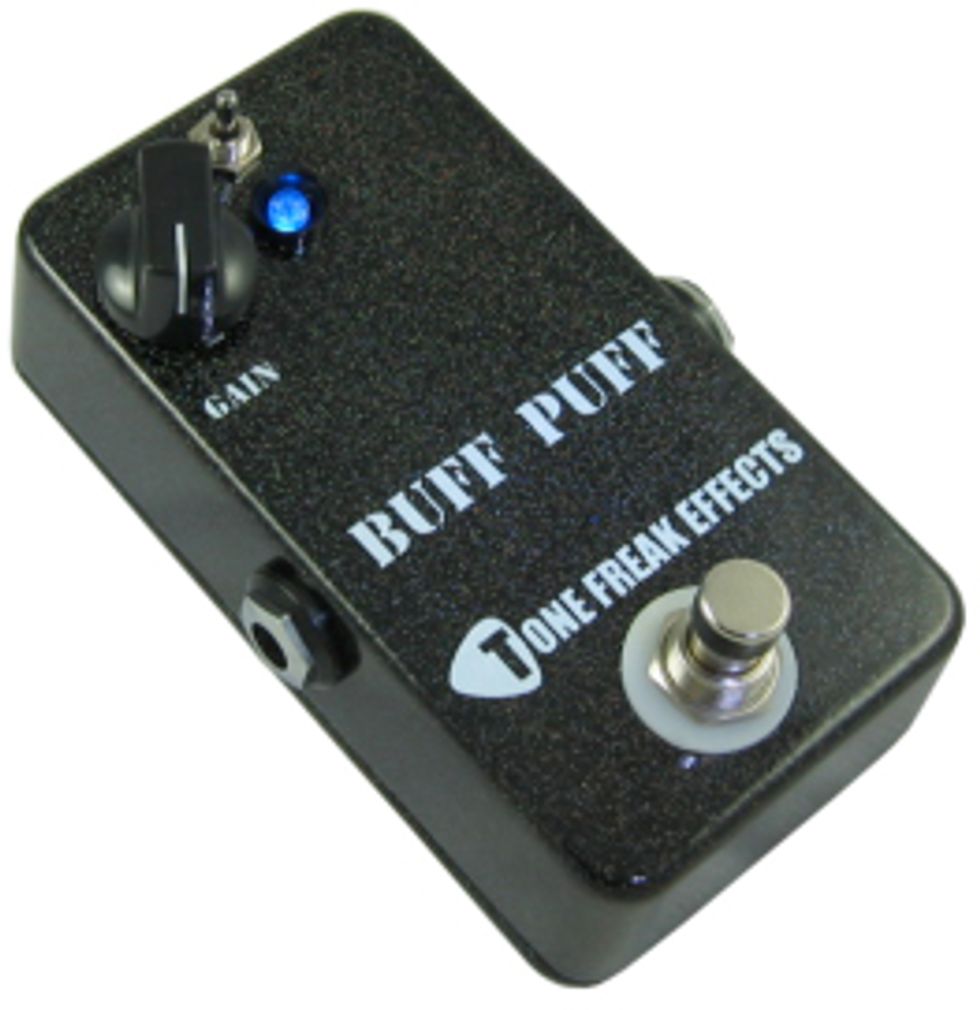
Too many buffered bypass pedals can create a cumulative effect tonally, creating a harsh sound. It’s all about experimenting and balance. If you’re running four or five true-bypass pedals with 40 or 50 feet of cable total, you can get a dedicated buffer pedal to restore lost signal. I dig the Buff Puff, from Tone Freak Effects, but there are a variety of similar pedals out there—try a few and decide what sounds best for you.
Simple True-Bypass Switchers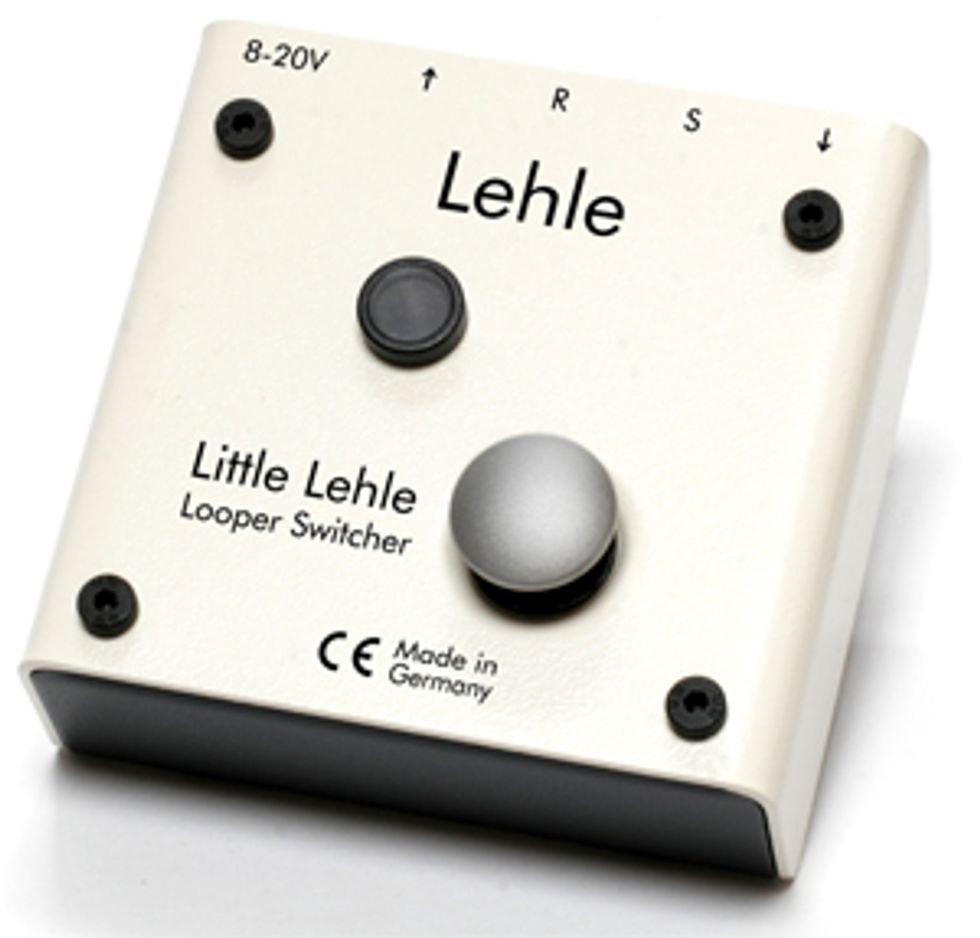
Keep in mind though, if you are running more than 30 feet of cable, even with the true-bypass looper engaged (and you probably are—at least a 10-foot cable from your guitar to your pedals and a 20-foot cable from your pedals to your amp is common) then you are going to have some capacitance, and resulting high-end loss. So a good buffer is still recommended.
More Loops!
True-bypass loop switchers allow you to connect all the individual pedals on your board to individual true-bypass loops, or perhaps in groups of 2-3 pedals or more per loop.
Once again, the advantages of using a loop switcher are that you are not running through all the extra jacks, cabling, and circuitry (in the case of non-true-bypass pedals) when not using the pedals. Your guitar goes into the switcher, and if none of the loops are engaged, it goes directly out of the switcher to your amp, possibly with a good buffer in between, to make sure your tone makes it from the board to the amp in good shape. Voodoo Lab’s Pedal Switcher and the Road Rage multi-loop switcher (pictured above) are just a few of the available options in this category.
Go MIDI
MIDI switching systems, in my opinion, are the ultimate tool in controlling your effects while maintaining your tone. They Incorporate loops for effects, but they are also programmable, allowing you to store preset combinations of your effects, and because they have MIDI they also allow you to switch MIDI-controlled effects as well. Some feature dedicated outputs for a tuner, expression pedal inputs, relay switching to channel switch your amp, 9-volt powered outs to power your pedals, switchable internal buffers, etc. Options in this category include TC Electronic’s G System, which also incorporates its own internal effects, Musicomlab’s MK3 switcher/MIDI controller, Glab’s GSC-3, and RJM Music’s Effect Gizmo and MasterMind controller.
Personally, I really like having the ability to have pedals on the floor in front of you like a traditional pedalboard, but with the added bonus of MIDI control and presets, proper buffering, etc.
When I toured with Chris Cornell in 2008, I used the board below built around the TC Electronic G-System.
So Many Choices
In so many ways, it’s a great time to be a guitarist. On top of limitless options for effects, now there are nearly as many ways to put them together. So whether you go in line with a buffer, a single true-bypass loop, a multi-loop setup, or an intricate MIDI system make sure to keep these two key points in mind:
1. Make maintaining a great guitar-to-amp “core tone” a prerequisite.
2. Assemble all the pedals you’d like to incorporate into your rig, and then invest in high-quality power supplies and cables to keep the signal as pure as possible before assessing your switching options.
3. Experiment with true-bypass loop switchers and/or buffers to keep your core tone strong and true, and determine whether the convenience of having presets is worth the expense of a pro-level MIDI system.
Good luck, and rock on!
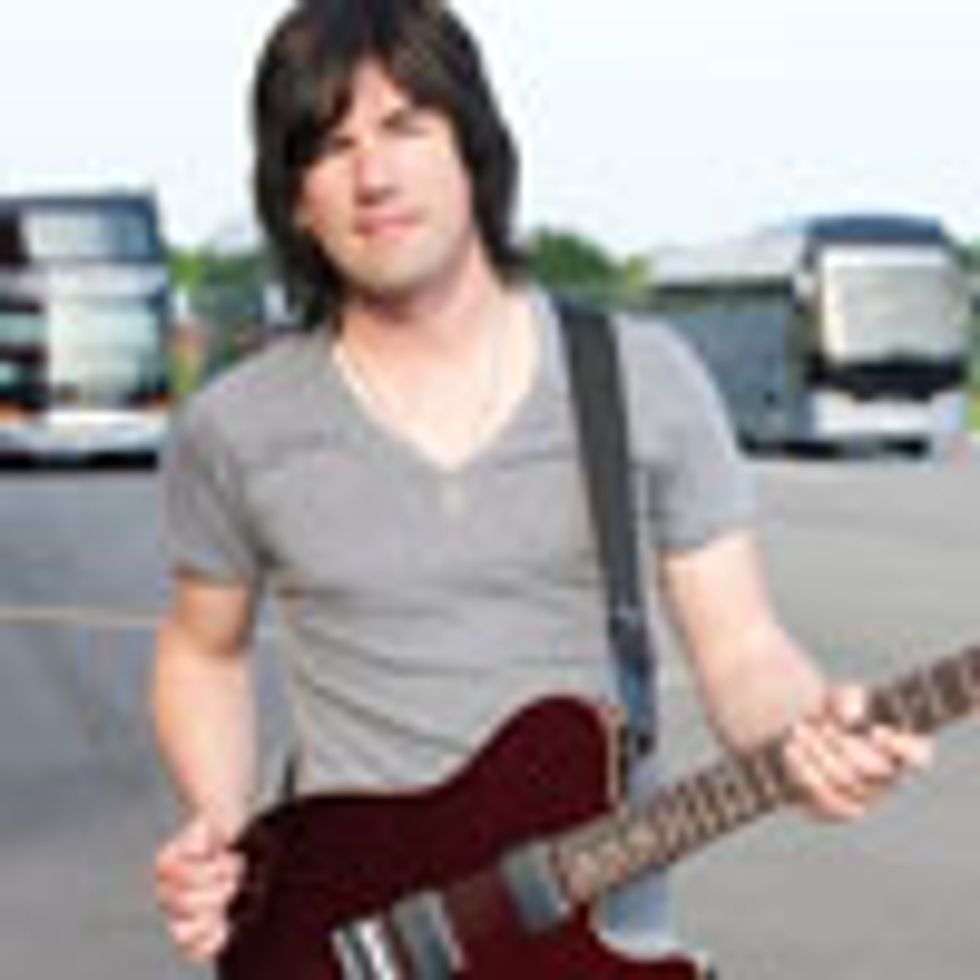 Pete Thorn is a Los Angeles-based guitarist, currently touring with Melissa Etheridge. His solo album Guitar Nerd will be out in early 2011.You can read more about his career and music at peterthorn.com.
Pete Thorn is a Los Angeles-based guitarist, currently touring with Melissa Etheridge. His solo album Guitar Nerd will be out in early 2011.You can read more about his career and music at peterthorn.com.